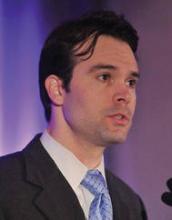Medicare Part D coverage significantly reduced nondrug medical spending for beneficiaries who had limited drug coverage prior to the start of the federal prescription drug plan, Harvard Medical School researchers reported July 26 in JAMA.
The 10.6% savings was mostly due to a decrease in spending on acute and postacute care under Medicare Part A (JAMA 2011;306:402-9).
"These reductions in nondrug medical spending suggest that Part D has not cost as much as what we initially thought," Dr. J. Michael McWilliams, the study’s lead author, said in an interview.
The findings could also lend support to the Affordable Care Act’s goal of closing the "doughnut hole," the gap in drug coverage under Part D, he added. "The cost of closing the doughnut hole could be less than what we might expect because of these partially offsetting reductions in spending on nondrug medical care."
The results also highlight a need for better coordination between all parts of Medicare, the investigators wrote.
"Even though Part D plans function completely separately from Part A and Part B of the Medicare program, and even though they have no financial incentive to lower copayments, particularly for beneficial medications, clearly providing this benefit to seniors through stand-alone Part D plans has been quite effective," Dr. McWilliams said.
The authors used data from the Health and Retirement Study and linked it to Medicare claims data from 2004 to 2007 on 6,001 beneficiaries, then categorized the beneficiaries as having had generous (2,538) and limited (3,463) drug coverage prior to implementation of Part D. Nontraditional Medicare beneficiaries, such as those who qualified for Medicare before age 65 or those with veterans’ health benefits, were excluded.
For the control cohort, they selected a similar group of 5,988 beneficiaries who had generous (2,537) and limited (3,451) drug coverage in 2002. They studied the group up to 2005.
They found that total nondrug medical spending before Part D implementation was not significantly higher for beneficiaries with limited drug coverage compared with those who had generous drug coverage (7.6% relative difference).
However, after implementation of Part D, nondrug medical spending for beneficiaries who previously had limited drug coverage was 3.9% lower than those who previously had generous drug coverage, leading to a significant differential reduction of 10.6%.
In dollars, Medicare spent nearly $306 per quarter less than expected on beneficiaries who previously had a limited drug coverage.
"The economic and clinical benefits suggested by these reductions may be enhanced by further expansions in prescription drug coverage for seniors, improvements in benefit designs for drug-sensitive conditions, and policies that integrate Medicare payment and delivery systems across drug and nondrug services," the authors wrote.
Previous studies have shown that the implementation of Part D has been associated with reduced out-of-pocket costs, increased medication use, and better medication adherence (N. Engl. J. Med. 2009;361:52-61) as well as decreased hospitalization for ambulatory care-sensitive conditions (Health Serv. Res. 2011;46:1104-23).
The authors had no conflicts of interest to disclose. The study was supported by grants from several charitable foundations.


